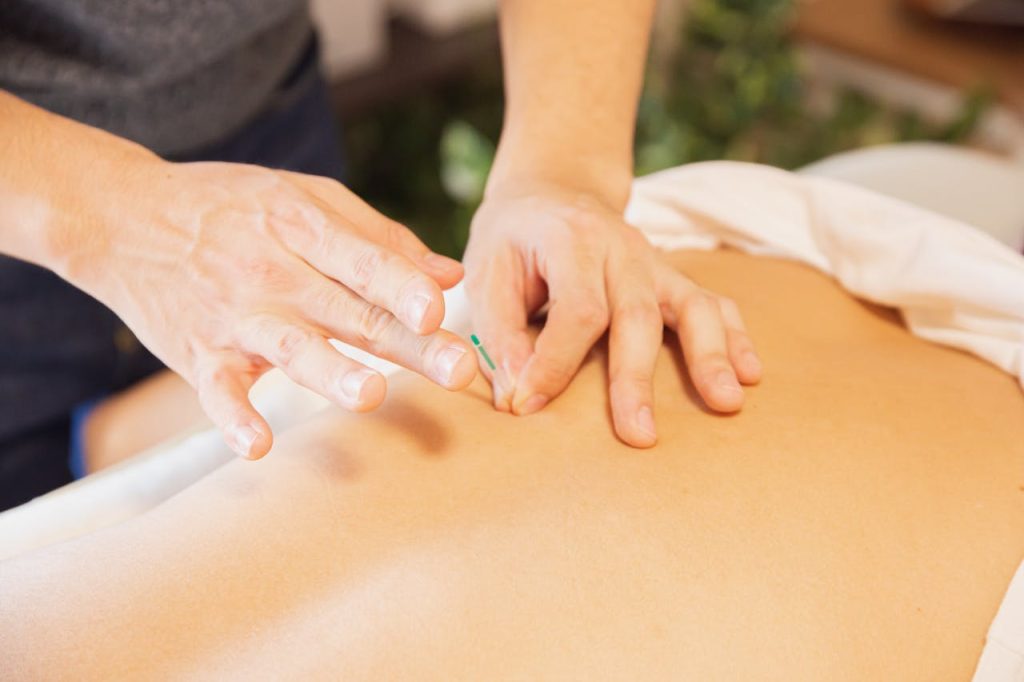Breanna Guettler PT, DPT
Dry needling is an increasingly popular technique used in physical therapy to alleviate pain and improve muscle function. This therapeutic approach has its roots in ancient practices and has evolved with modern research to become a valuable tool in the hands of skilled therapists. Here, we explore the history, current research, and practical aspects of dry needling, along with my own experience with positive patient outcomes.
The History of Dry Needling
Dry needling’s origins can be traced back to ancient acupuncture practices, but it has developed into a distinct technique over time. In the 1940s, Dr. Janet Travell, a pioneer in the study of myofascial pain, began exploring the use of needling without injecting medication to relieve pain associated with trigger points. The term “dry needling” was later coined to differentiate this practice from traditional acupuncture, focusing on the direct treatment of musculoskeletal pain and dysfunction.
Current Research and Benefits
Recent research supports dry needling as an effective treatment for a variety of musculoskeletal conditions. Studies have shown that dry needling can help:
-
- Reduce Pain: By targeting trigger points, dry needling can decrease localized pain and referred pain patterns, providing relief from chronic and acute conditions.
-
- Improve Range of Motion: The release of muscle tension can enhance flexibility and movement efficiency, which is beneficial for athletes and active individuals.
-
- Enhance Muscle Activation: By reducing muscle tightness, dry needling can restore normal muscle activation patterns, improving overall function and performance.
My experience with dry needling has consistently shown positive patient outcomes. Many of my clients have reported significant reductions in pain and improvements in their ability to engage in physical activities without discomfort.
What to Expect During a Session
During a dry needling session, a physical therapist will insert thin, sterile needles into specific trigger points in the muscles. The goal is to elicit a local twitch response, which indicates the release of tension within the muscle fibers.
What a Typical Patient Might Feel:
-
- Initial Sensation: Patients may feel a slight prick when the needle penetrates the skin, followed by a dull ache or muscle twitch as the needle targets the trigger point.
-
- During the Session: Some patients experience mild cramping or discomfort as the muscle responds to the needling. This sensation is typically short-lived and indicates the release of tension.
Normal Response for Up to 24 Hours After Treatment:
-
- Muscle Soreness: It is common to experience mild soreness in the treated area, similar to the feeling after a deep tissue massage. This usually resolves within 24 to 48 hours.
-
- Temporary Fatigue or Bruising: Some patients might feel slightly fatigued or notice minor bruising at the needling sites. These reactions are normal and generally subside quickly.
Contraindications and Clinical Decision-Making
Dry needling is a safe and effective treatment when performed by trained professionals. However, it is not suitable for everyone. Contraindications include:
-
- Pregnancy: Needling should be avoided in certain areas during pregnancy.
-
- Bleeding Disorders: Patients with clotting issues or those on blood thinners should exercise caution.
-
- Infection or Skin Lesions: Needling should not be performed in areas with active infections or open wounds.
As physical therapists, we have the clinical decision-making skills to determine if dry needling is appropriate for each individual. It’s essential to discuss your specific condition and health history with your therapist to ensure that this treatment aligns with your goals and needs.
Is Dry Needling Right for You?
Dry needling can be a powerful tool in managing pain and enhancing muscle function, but it is crucial to approach this treatment with a personalized plan. As part of a comprehensive therapy approach, dry needling can offer significant benefits for those seeking to improve their physical well-being.
If you’re considering dry needling, I encourage you to consult with your physical therapist. Together, we can determine if this treatment is right for you and develop a plan that supports your health and fitness goals.

